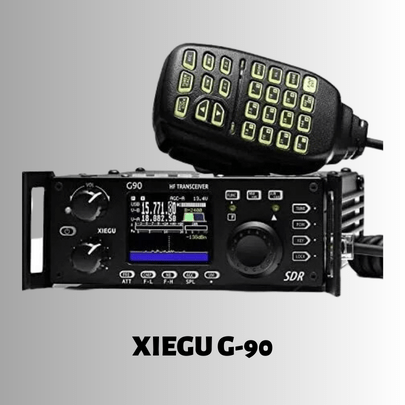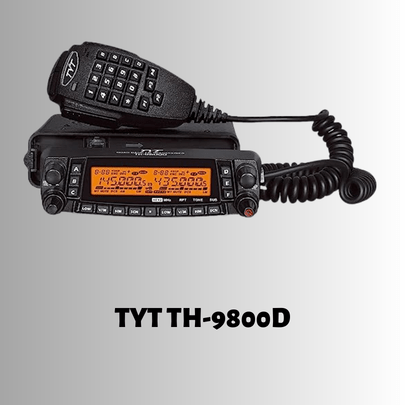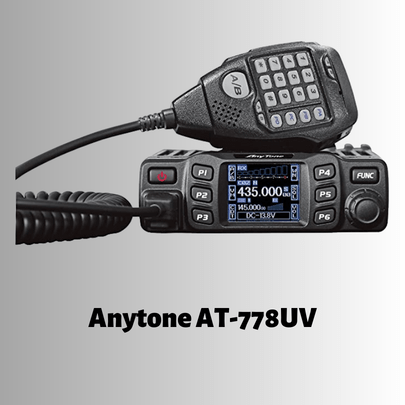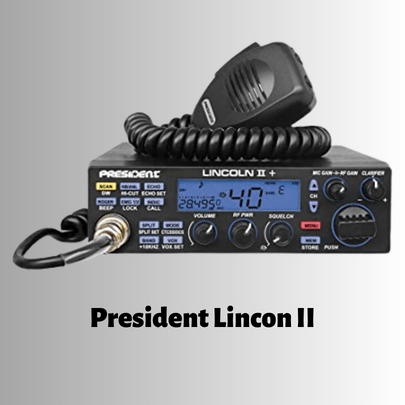Having a beautiful Ham radio base station is like a dream for every amateur radio enthusiast who steps into this radioing hobby. So for beginners it raises many queries and sometimes it becomes confusing to choose correct equipment to build your first ham radio base station. In this article we have tried to simplify things for you if you’re looking to have one.
What is a Ham radio base station?
So you’ve heard about ham radios, but what exactly is a ham radio base station?
Well, a ham radio base station is a radio setup used by ham radio operators that is more stationary rather than being a pocket friendly model like a walkie talkie. Unlike handheld ham radios, which have limited range and power, a ham radio base station is a more powerful and fixed setup that allows for long-distance communication.
Handheld ham radio vs Ham radio base station
When it comes to possess a radio, the very first decision that you have to make is whether to go for a handheld ham radio (like a mobile phone) or a ham radio base station (like we see often with vehicles)? And why shall you choose Ham radio base station?
Also read: Ham radio vs CB radio: which one to choose
Limitations of Handheld ham radios
Handheld ham radios are small and portable, which makes them convenient for on-the-go communication. Especially when if you’re travelling or on a Emergency service, A handheld radio is easy to carry. However, they do have some limitations. Here are a few:
Limited range:
Handheld ham radios typically have a limited range, especially when compared to base stations. This can restrict your ability to communication up to a certain geographical area only.
Lower power output:
Handheld ham radios usually have lower power output, which can result in weaker signals and reduced communication range. Also battery tends to run out quickly which can prove troublesome during emergency (distress) communication.
Limited features:
Handheld ham radios often have fewer features and options compared to base stations. This can limit your ability to customize and optimize your communication setup. Also your scope of experiment in different ways gets limited.
Benefits of Ham radio base station
On the other hand, a base stations offer several benefits over handheld ham radios. Here are a few advantages of using a ham radio base station:
Greater range:
Base stations have higher power output, allowing for greater communication range. This means you can reach other amateur radio operators who may be far away. Typical Ham radio base stations are able to communicate from few hundreds to several thousand miles with correct setup.
Enhanced signal quality:
Base stations typically have better receivers and transceivers, resulting in clearer and more reliable communication. It has always a better sound quality compared to handheld radios.
Customization options:
With a base station, you have more control over the setup and the ability to add accessories such as high-gain antennas, amplifiers, and external speakers.
Improved stability:
Base stations are stationary setups, which means they are less susceptible to interference from movement or obstacles. This results in more stable and consistent communication. A stable setup is the key to having perfect experiments.
Recommended Models: Quick Reference Table
Before proceeding further; here is a quick reference table of some recommended ham stations which will be discussed in later section of this article.
Things to consider before choosing a Ham radio base station
Before taking a final call on Ham radio base station model, you should be brainstorming with several key factors that are discussed below:
Power output
The power output of a ham radio base station determines its reach and signal strength. Higher the power output greater the range of communication achieved. Take into account your specific needs on distance coverage required and choose the power output accordingly.
Sensitivity
“Sensitivity” of a Radio receiver is the measure of how effectively it receives weaker signals and produces desired output. Sensitivity is an important factor in reception quality. Look for a base station with good sensitivity ratings for optimal performance.
Antenna Compatibility
Different antennas have different capabilities. So having a Ham radio base station which has compatibility with different type of antenna setups will provide you with greater flexibility. It includes different frequency bands, different types of directional outputs and different coverages. so choose a base station that is compatible with a wide range of antennas.
Frequency Bands supported
Choose a base station which covers most of the Frequency bands that are privileged to you as per your license class. Depending on your specific communication needs, you may require a base station that supports HF, VHF, UHF, or even CB bands. Choose a base station that covers the all frequency bands you plan to operate on.
Sound quality and Accessories
Sound quality is another important factor to consider. Look for base stations that has crisp audio output, along with the ability to connect external speakers or headphones for improved listening experience. Also, consider the availability of accessories such as microphones, amplifiers, and filters.
Price
Lastly, consider your budget when choosing a ham radio base station. Base stations vary in price depending on their features and capabilities. On one hand where a handheld ham radio will cost around $50-100 range, ham radio base station may cost from more than $100 that extends up to thousands of dollars as you opt for higher models.
Best Ham Radio base station recommendations
1. Xiegu G90 HF Radio

The Xiegu G90 is a portable HF amateur radio transceiver with a built-in antenna tuner.
It supports multiple frequency bands and has a power output of 20W. The G90 offers excellent sensitivity and sound quality, making it a popular choice among amateur radio operators.
- Portable and compact design
- Built-in antenna tuner for easy setup
- Wide range of supported frequency bands
- Good sensitivity and sound quality
- Lower power output compared to some other base stations
- On higher price band for beginners
2. TYT TH-9800D

The TYT TH-9800 is a versatile quad-band mobile ham radio that operates on the VHF, UHF, 220MHz, and 10-meter bands.
It features cross-band repeat functionality, detachable faceplate, and a large multifunctional LCD screen.
With 800 memory channels and multiple scan modes, the TH-9800 offers extensive customization and scanning options.
- Quad-band capability for wide frequency coverage.
- Cross-band repeat functionality for extended communication range
- Detachable faceplate for flexible installation.
- Large LCD screen with multi-color display.
- Extensive memory channels and scanning modes.
- Programming the radio can be complex for beginners.
- Some users reported issues with the microphone quality.
BTech UV-50X2

The BTECH UV-50X2 is a powerful mobile ham radio with a 50-watt output and dual-band capability (VHF/UHF).
It features full cross-band functionality, allowing simultaneous reception on two bands.
The large LCD screen, customizable channel names, and programmable function keys make it easy to operate and navigate the radio’s settings.
- High power output for extended communication range
- Dual-band capability for increased flexibility.
- Cross-band functionality for simultaneous reception
- Large LCD screen and customizable channel names for convenient operation.
- Programming the radio can be challenging for beginners.
- Some users reported issues with the microphone quality.
Xiegu G90 Portable Transceiver

The Xiegu G90 Portable HF Amateur Radio Transceiver is a versatile option for Stationary as well as mobile use
It operates in the HF frequency range, allowing for communication over long distances. The radio features a compact and lightweight design, making it suitable for installation and use in Vehicles.
- Built in Antenna Tuner
- High Power output (20W)
- Built in Sound card for Digital Modes
- Large colour display
- Not Battery Powered
- Requires External Power source
Xiegu X6100

The Xiegu X6100 Portable HF Amateur Radio Transceiver is a feature-packed ham radio suitable for building a base station with compact and versatile design.
It operates in the HF frequency range, offering long-range communication capabilities.
- Compact and rugged design
- Built-in automatic antenna tuner
- Good sensitivity and sound quality
- Easy to use and navigate interface
- Lower power output may limit communication range
- Comparatively Costly Model
AnyTone AT-778UV (Our pick for beginners)

The AnyTone AT-778UV is a dual-band mobile radio that operates on the VHF and UHF bands.
It offers a compact design, a high power output of 25 watts, and multiple scan modes for efficient channel monitoring.
The radio includes a detachable faceplate, large LCD screen, and programmable function keys for easy operation.
- Compact and mobile design
- Wide frequency band coverage
- High power output for reliable communication
- Easy programming with programmable memory channels
- Limited to VHF and UHF frequency bands
Note: Given the balance between price & features available, we recommend this model for beginners who are just starting to build their base station.
President Lincon II Plus

The President Lincoln II Plus is a 10-meter amateur radio designed for advanced users.
It offers a broad frequency range, advanced features such as SSB (Single Sideband) modulation, and a large multi-function LCD screen.
The radio includes a built-in SWR meter for antenna tuning and an integrated echo function for voice effects.
- Wide frequency coverage on the 10-meter band.
- Advanced features like SSB modulation for enhanced communication.
- Large multi-function LCD screen for easy operation.
- Built-in SWR meter for antenna tuning.
- Integrated echo function for voice effects.
- Limited to the 10-meter band only.
- Advanced features may be overwhelming for beginners.
Conclusion
Choosing the right Ham radio base station is a right balance between your specific needs, your budget and your hunger for experimenting.
Do Consider factors such as power output, sensitivity, antenna options, frequency bands supported, sound quality, and price before making your final decision. The recommended base stations mentioned in this article offer a range of options to suit different needs and budgets.
FAQs on Ham Radio Base station
-
Can I use a ham radio base station for emergency communication?
Yes, ham radio base stations can be used for emergency communication as they offer greater power and range compared to handheld radios. They are commonly utilized by amateur radio operators during emergencies and natural disasters.
-
Can I connect my ham radio base station to a computer?
Yes, many ham radio base stations offer the option to connect to a computer via USB or other interfaces. This allows for digital modes of communication and computer control of the base station.
-
Are ham radio base stations difficult to set up?
Setting up a ham radio base station can be more involved than setting up a handheld radio, but it is not overly complicated. With proper guidance and following the manufacturer’s instructions, you should be able to set up your base station successfully.
-
What are the supporting equipment in a Ham radio base station?
A Ham radio base station can have many equipment other than the base transceiver. Antennas, Antenna Tuners, SWR meter, A computer or a laptop, A headset Power supply, Battery backup can also be a part of good Ham radio base station.
Other Blog posts from the category
- Ham Radio SWR Meter || How to Choose & Use 1 in 2025
- Ham Radio vs CB vs Walkie Talkie: Choose the Right one USA 2024
- 03 Best GMRS radios for Beginners
- 5 Best Ham Radio Microphones for beginners
- Ham radio base station: Best choices to start with
- Ham Radio Desk: Best Ideas & Top picks 2023
- Ham radio Headsets || Best choices in 2023
- Conquer the Trails: 6 Best Jeep Ham Radios || Updated 2025
- Explore 11+ Best Ham Radio Backpacks: USA 2023
- 7 Best Mobile ham radio for Beginners USA 2023

